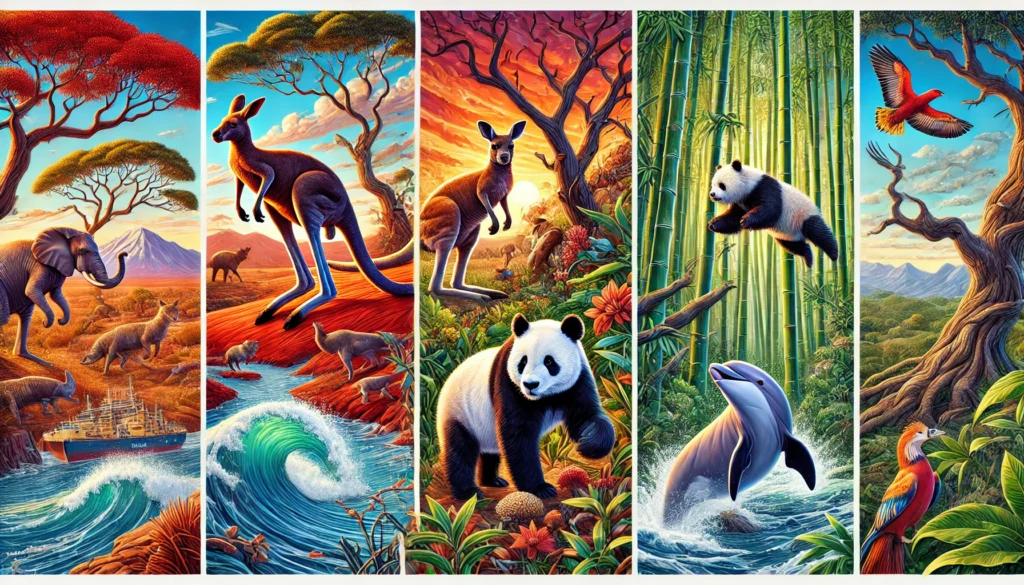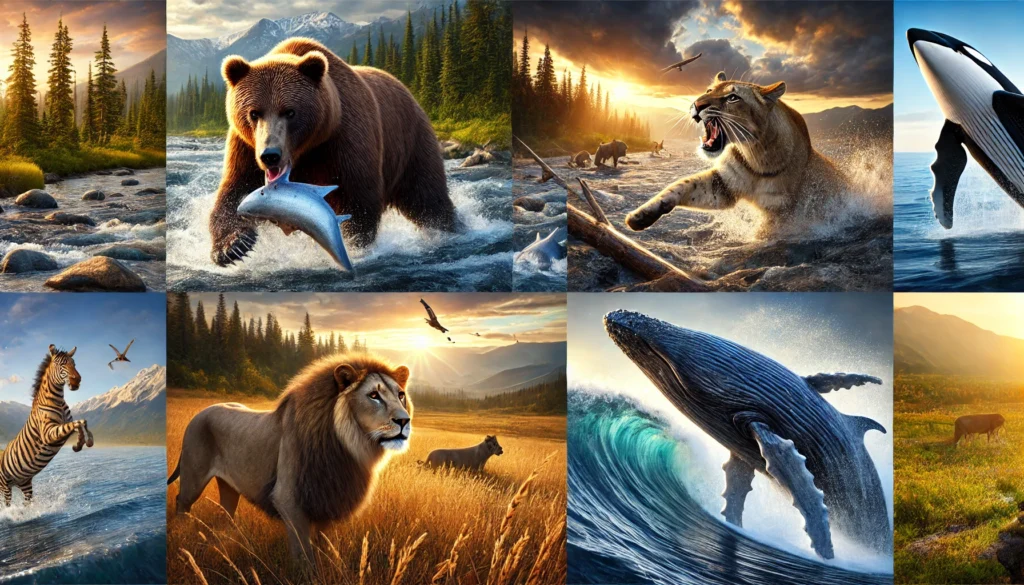The diversity of wildlife is an inexhaustible source of fascination for scientists, biologists and nature lovers. Among the most intriguing creatures in the animal kingdom, wild mammals stand out for their complex social interactions, behavioral adaptations and varied habitats. From dense forests to open savannas, these animals exhibit a wealth of behaviors that offer us a glimpse into the survival strategies they have developed over millions of years of evolution. Furthermore, understanding these behaviors is crucial to the conservation and protection of these incredible species.
Behavior of Wild Mammals
Wild mammals exhibit a wide range of behaviors that vary according to the species and the environment in which they live. For example, African elephants are known for their complex social structures and strong family bonds. They live in groups led by a matriarch, and group cohesion is maintained through sophisticated communication that includes low-frequency sounds, touches, and gestures.
Another notable example is the hunting behavior of big cats, such as lions and tigers. Lions, who live in groups called prides, coordinate their hunts strategically, taking advantage of the strength of the group to capture large and powerful prey. Tigers, on the other hand, are solitary hunters that rely on their individual strength and cunning to ambush their prey in dense forests and tall grasses.
Adaptations for Survival
Each wild mammal species has developed unique adaptations to survive in its specific habitats. Koalas, for example, are adapted to live in eucalyptus forests in Australia. Their exclusive diet of eucalyptus leaves requires a specialized digestive system to detoxify the chemicals present in the leaves. Additionally, they have sharp claws and an opposable thumb that allows them to firmly grasp branches.
Polar bears, inhabitants of Arctic regions, have notable physical adaptations, such as a thick layer of fat and dense, waterproof fur that protects them from extreme cold. They also have large, furry paws that function like snowshoes, allowing them to walk on snow and ice with ease.
Habitat of Wild Mammals
The habitats of wild mammals are as diverse as the animals themselves. In the tropical forest, we find impressive biodiversity, with species such as howler monkeys and jaguars. These habitats provide an abundance of food and shelter, but they also present challenges, such as competition for resources and the need to camouflage to avoid predators.
In African savannas, wild mammals, such as zebras and antelopes, have developed survival strategies based on speed and agility. Savannas offer vast open spaces with low vegetation, which makes it easier for predators to escape, but also requires constant movement in search of new grazing areas.

Interactions with the Environment
Interactions between wild mammals and their environment are essential for the health of ecosystems. For example, beavers are known as ecosystem engineers due to their ability to build dams that create new aquatic habitats. These dams increase biodiversity by providing breeding areas for fish and amphibians and by providing water resources for other species.
Bats, on the other hand, play a crucial role in pollination and seed dispersal. Many plants depend on bats to pollinate their flowers or disperse their seeds, which contributes to forest regeneration and the maintenance of plant diversity.
Threats and Conservation
Despite their ecological importance, many wild mammals face significant threats from human activity. Habitat destruction, illegal hunting and climate change are some of the main threats that put the survival of these species at risk. Conservation initiatives are essential to protect wild mammals and their habitats.
Conservation programs, such as nature reserves and national parks, play a crucial role in protecting wild mammal habitats. Furthermore, public awareness campaigns and strict environmental policies are needed to ensure that future generations can continue to appreciate the incredible diversity of wild mammals on our planet.
Wild Mammals in Popular Culture
Wild mammals also occupy a special place in popular culture and human traditions. They are often depicted in myths, legends and folk stories, symbolizing forces of nature, wisdom or power. For example, in African culture, the lion is often seen as a symbol of courage and royalty, while in Norse mythology, the bear is associated with strength and protection.
Wild mammals also inspire artists, writers and filmmakers, resulting in a vast amount of artwork, literature and films that celebrate the beauty and majesty of these creatures. These cultural representations help raise public awareness about the importance of wildlife conservation.
Wild Mammals in Scientific Exhibitions
Museums and zoos around the world play an important role in education and awareness about wild mammals. These institutions offer detailed, interactive exhibits that allow visitors to learn more about the habits, habitats, and conservation challenges faced by these species. Through these exhibits, the public can develop a deeper appreciation and commitment to protecting wildlife.
Role of Wild Mammals in Ecosystems
Wild mammals play fundamental roles in maintaining the balance of ecosystems. Predators, such as wolves, regulate herbivore populations, preventing overpopulation and habitat degradation. Herbivores, like elephants, shape vegetation and create clearings that benefit other species. Detritivores, such as some rodents, help decompose organic matter, recycling essential nutrients into the soil.
Scientific Studies and Recent Discoveries
Scientific research on wild mammals continues to reveal new discoveries about their behavior and ecology. Recent studies have used advanced technology, such as GPS tracking collars and trap cameras, to monitor the movements and interactions of these animals in their natural habitats. These data are essential for developing effective conservation strategies and understanding how wild mammals are responding to environmental changes.

Impact of Climate Change on Wild Mammals
Climate change poses a growing threat to wild mammals, affecting their habitats and food sources. Melting Arctic ice, for example, is reducing the habitat of polar bears, forcing them to travel greater distances in search of food. Changes in precipitation and temperature patterns are also impacting resource availability for many species, requiring rapid adaptations and, in some cases, resulting in population declines.
Rehabilitation and Reintroduction Efforts
For some threatened species, rehabilitation and reintroduction programs have proven effective in recovering populations. Rehabilitation centers work to treat and care for injured or orphaned animals, preparing them for reintroduction into the wild. These programs not only help populations recover, but also provide valuable data on the habitat and behavioral requirements of reintroduced species.
Importance of Environmental Education
Environmental education is crucial for the protection of wild mammals. Educational programs in schools, communities and through social media promote awareness of the importance of wildlife conservation. By educating future generations, we can ensure there is an ongoing commitment to preserving wild mammals and their habitats.
Conclusion
The lives of wild mammals are a wonderful tapestry of complex behaviors, ingenious adaptations, and dynamic interactions with the environment. These animals not only enrich our planet's biodiversity, but also play essential roles in ecosystems. The preservation of wild mammals and their habitats is fundamental to maintaining global ecological health. Protecting these species and promoting their harmonious coexistence with human activities is a shared responsibility that requires ongoing effort and commitment. Between African elephants, koalas, polar bears and many others, each species has a unique story that contributes to the richness of life on Earth.
